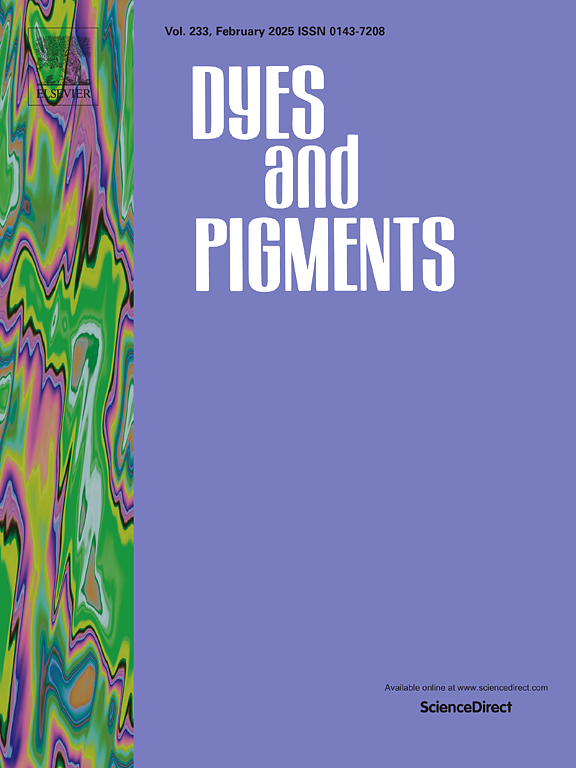Novel axial fullerenol-substituted hyperbranched phthalocyanines:Synthesis, photophysical and nonlinear optical properties
IF 4.1
3区 工程技术
Q2 CHEMISTRY, APPLIED
引用次数: 0
Abstract
In this study, we designed and synthesized a novel hyperbranched structure of phthalocyanine compound, which was axially linked with fullerenol to form a D-A (donor and acceptor) type compound HLaPc-C60(OH)n. In this configuration, phthalocyanine acts as the electron donor, while fullerenol as the acceptor. The formation of hyperbranched structures and the introduction of fullerenol expanded the π-conjugation system and weakened the aggregation phenomenon. The unique three-dimensional hyperbranched structure with abundance of D-A enhances the photoinduced intramolecular electron transfer (PET) and energy transfer (ET) processes. This improvement contributes to the compound's excellent nonlinear optical properties. In addition, we prepared a PPSU-based composite film (HLaPc-C60(OH)n/PPSU) in which the interaction between the similar sulfonyl structures and HLaPc enhances its dispersion. The values of large third-order nonlinear susceptibility (Im[χ(3)]) of 2.20 × 10−8 esu and a low limit threshold (Ilim) of 0.91 J/cm2 demonstrate that the composite film material has considerable potential applications as optical limiters.

求助全文
约1分钟内获得全文
求助全文
来源期刊

Dyes and Pigments
工程技术-材料科学:纺织
CiteScore
8.20
自引率
13.30%
发文量
933
审稿时长
33 days
期刊介绍:
Dyes and Pigments covers the scientific and technical aspects of the chemistry and physics of dyes, pigments and their intermediates. Emphasis is placed on the properties of the colouring matters themselves rather than on their applications or the system in which they may be applied.
Thus the journal accepts research and review papers on the synthesis of dyes, pigments and intermediates, their physical or chemical properties, e.g. spectroscopic, surface, solution or solid state characteristics, the physical aspects of their preparation, e.g. precipitation, nucleation and growth, crystal formation, liquid crystalline characteristics, their photochemical, ecological or biological properties and the relationship between colour and chemical constitution. However, papers are considered which deal with the more fundamental aspects of colourant application and of the interactions of colourants with substrates or media.
The journal will interest a wide variety of workers in a range of disciplines whose work involves dyes, pigments and their intermediates, and provides a platform for investigators with common interests but diverse fields of activity such as cosmetics, reprographics, dye and pigment synthesis, medical research, polymers, etc.
 求助内容:
求助内容: 应助结果提醒方式:
应助结果提醒方式:


